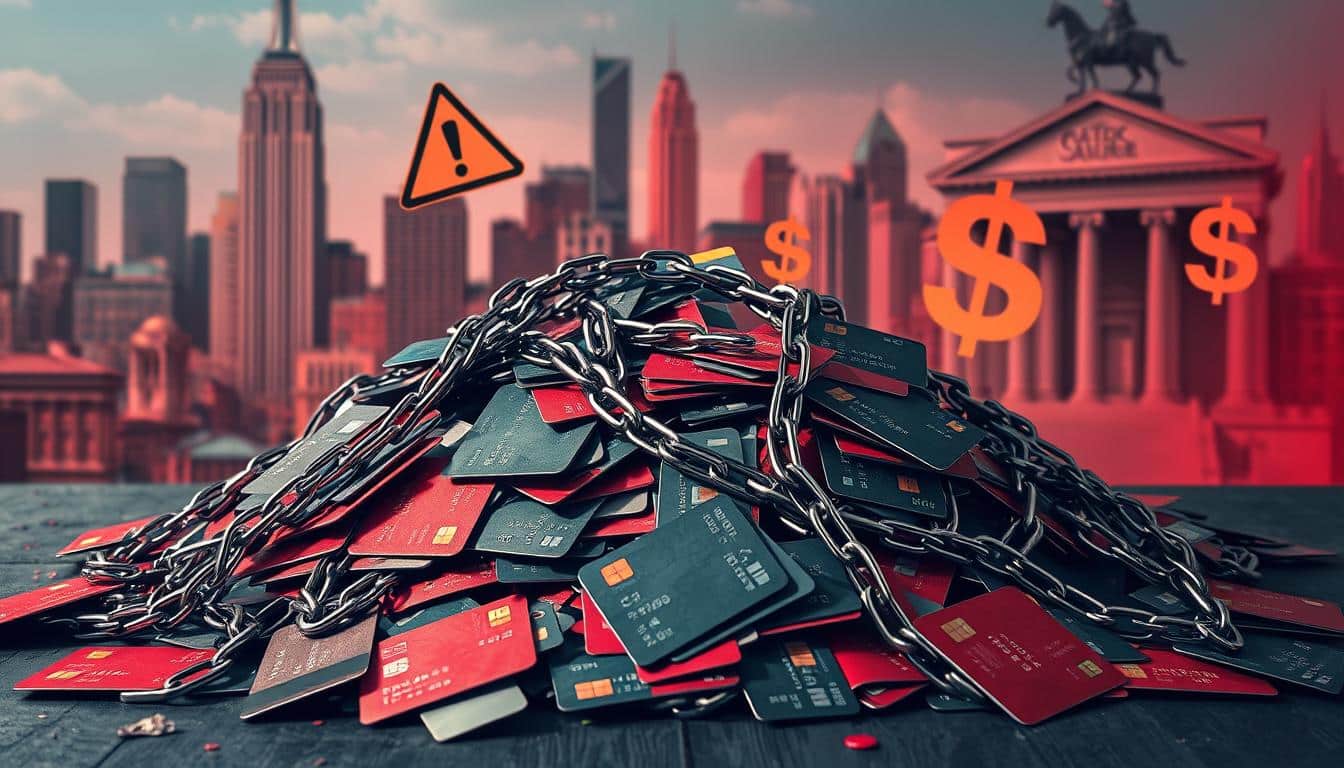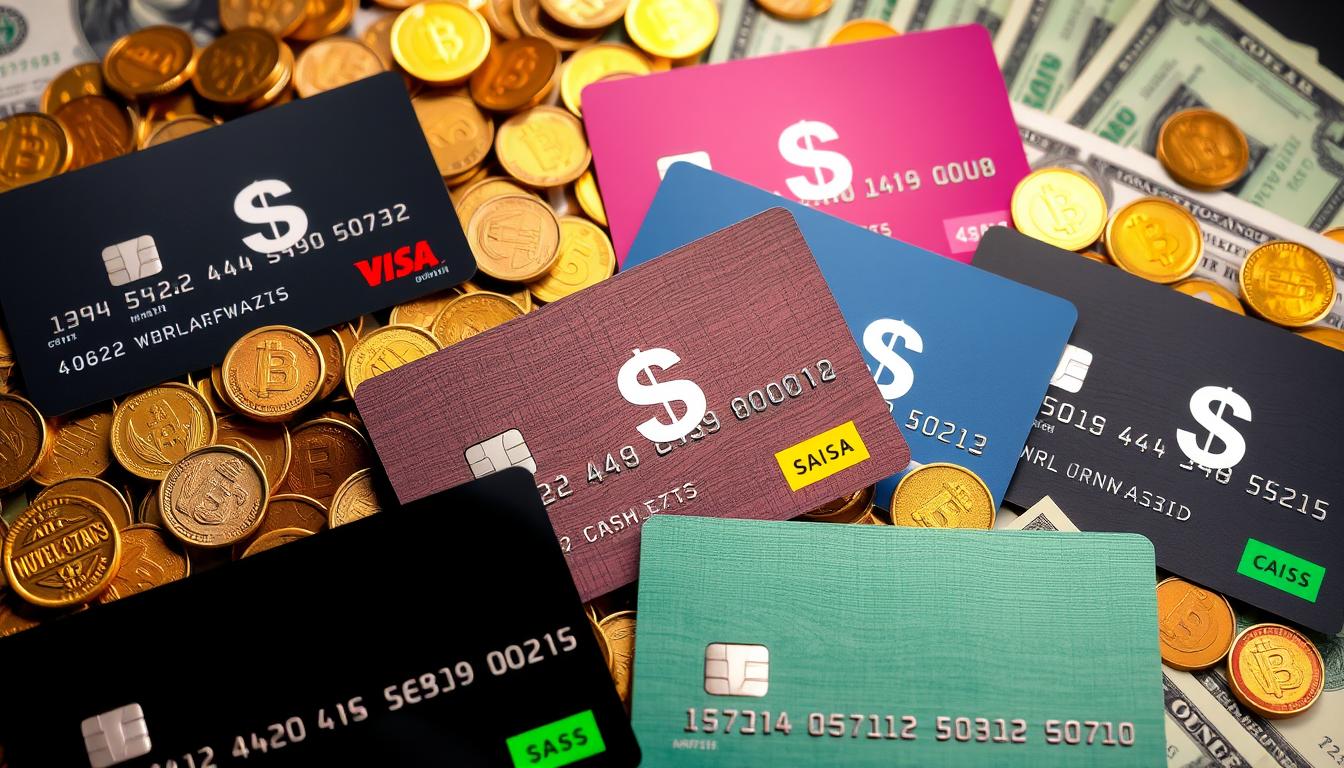Deflation is a major economic event that impacts the US economy. It means prices for goods and services drop. This makes money more valuable, affecting how much people spend and the economy’s health.

GBTI Visa Gold Card

What is Deflation?
Getting what deflation means is key to knowing its effects on the economy. It’s when the cost of goods and services falls. This drop lets people get more for their money.
Anúncios
As prices go down, our money buys more. Deflation is tied to less money floating around and less spending. It’s a big worry for those who study the economy and make policies.
Anúncios
Definition and Overview
Discussing deflation is crucial in economic talks. At first, falling prices seem great because our money goes further. But, if prices keep dropping, it can hurt the economy big time.
People buying less and companies making less can trap the economy. It makes getting back on track tough. It’s important to grasp this to make smart economic choices.
How Deflation Differs from Inflation
The battle of deflation vs. inflation is like economic opposites. Inflation means things cost more, making our money worth less. Deflation does the opposite, making each dollar stronger.
A bit of deflation can help shoppers, but a lot means trouble, especially if people stop buying things. Knowing the difference helps us get the big picture.

Causes of Deflation
To really understand deflation’s impact, it’s crucial to know why it happens. It’s mainly due to less money and credit available, people buying less, and advances in technology. Each of these factors plays a big role.
Decrease in the Supply of Money and Credit
A big part of deflation is when there’s not as much money or credit to go around. Central banks can influence this by changing their policies. If they make it harder to borrow money, both people and businesses can’t spend as much. This leads to less money moving through the economy.
Decline in Aggregate Demand
Deflation often shows up when the economy is struggling, and people aren’t buying as much. This drop in demand can come from people saving more, the government cutting back, or sudden economic problems. When people stop spending, prices tend to fall.
Increased Productivity and Technological Improvements
But there’s a bright side. Getting better at making things and new technology can cause deflation too. Improvements mean companies can make things for less money. They can then charge lower prices. This helps bring prices down across the board.
Impact of Deflation on Consumers
Deflation changes how consumers behave and make money decisions. When prices drop, people feel the effects through how much they can buy and spend.
Increased Purchasing Power
With deflation, your money buys more, making you feel richer. This might make you want to spend more. It also shifts what people choose to buy, such as:
- Choosing must-haves over luxury items.
- Looking for deals to stretch their dollar further.
- Buying more of something while it’s cheap.
Effects on Consumer Spending Behavior
But, even if people can buy more, deflation might make them wait to spend. They wait for prices to drop even more. This waiting game can hurt the economy by:
- Lowering demand for products and services.
- Making stores stock up too much, so they stop making as much or let workers go.
- Keeping prices going down, which can stall the economy.
Deflation and Economic Stability
Deflation can disturb how steady an economy is in big ways. When prices drop, people buy less. This leads to businesses making less money and often reduces their investments to save up.
This situation can make unemployment rates go up. It creates a cycle that makes things worse.
The financial effects of deflation are deep. As money’s buying power grows, debts become harder to pay off. This puts pressure on both businesses and consumers.
With stagnant incomes, the weight of debt can cause defaults and bankruptcies. This makes the economy even more unstable.
The Historical Context of Deflation in the US
Looking back at the US deflation history helps us understand its economic struggles. Events like the Great Depression affected how the country deals with deflation. Recent deflation trends also show how complex this issue is.
Deflation during the Great Depression
The Great Depression had a big impact, with severe deflation harming American society. During this time, prices dropped sharply while unemployment soared. This led to many businesses closing and a smaller money supply, making things worse.
As prices kept falling, people stopped buying things, making the depression’s deflation even worse.
Recent Trends and Comparisons
After the Great Depression, the US mostly avoided long deflation periods. But, some economic downturns did cause temporary deflation, showing ongoing risks. Recent deflation shows some parts of the economy are still struggling with price drops.
By looking at recent deflation and past challenges, we see how important economic policies and consumer actions are to each other.
Deflation’s Effect on Debt and Borrowers
Deflation changes how debt works, making what you owe feel bigger. Because prices drop, the money you owe stays the same. This makes it harder for people and businesses to deal with their debts.
Increased Real Value of Debt
When deflation happens, debts feel larger because money’s value goes up. This means fixed debts are tougher to handle. People may find it harder to pay back what they owe as their income falls or doesn’t grow.
Challenges for Debtors in a Deflationary Period
During deflation, debtors find it tough. Their money might go down or not change, but what they owe stays the same. This makes the cost of their debts go up. Such pressures can make it hard for them to pay back their debts. As things get worse, it could lead to bigger problems that need new solutions.
Changing Views on Deflation
Over time, how we see deflation has changed a lot. It was once seen as a bad thing, linked to financial troubles and less spending by people. The old view was that deflation meant big problems, scaring both leaders and the public.
Now, people are starting to think differently about it. They see that good things, like better productivity and new tech, can also cause prices to drop. This doesn’t always mean the economy is doing poorly. Some modern economists think deflation isn’t always bad and can happen even when the economy is growing.
Our understanding of deflation is becoming deeper. By looking at its complex nature, we can better understand what it means for the economy. As new economic ideas come up, our talks about deflation get richer. This gives us useful thoughts for making future economic policies.
Deflation and Investment Choices
When deflation hits, knowing where to invest is key. Some assets do better, offering safety when times are tough. It’s crucial to spot which ones are most dependable during deflation.
Which Assets Perform Well During Deflation?
Defensive investments stand out in deflation for their value-holding ability. Common choices include:
- High-quality bonds, which generally offer fixed returns and are seen as safer bets.
- Cash holdings that ensure liquidity, allowing for quick access to funds.
- Essential commodities and services that maintain demand, such as food and healthcare products.
Investors often go for these safe options to manage through economic downturns.
Strategic Investment Decisions
Making smart investment moves is easier when you see deflation coming. Some strategies are:
- Rebalancing portfolios to focus on undervalued assets with recovery potential.
- Investing in firms with lots of cash and little debt, able to withstand tough times.
- Looking into sectors that usually do well when prices fall.
These actions can help investors protect and grow their money, even when the economy is shaky.
How Governments Address Deflation
Government policies are key to fighting deflation. They use different strategies to stabilize prices and boost growth. These methods help increase demand and balance the economy.
Expansionary Monetary Policy
Reducing interest rates is one way to tackle deflation. It makes loans cheaper for people and companies. Central banks, like the Federal Reserve, do this. They also add more money to the economy. This is known as quantitative easing. It aims to decrease unemployment and get people to spend and invest more.
Fiscal Tools to Combat Deflation
Fiscal tools are also vital against deflation. Governments spend more on things like roads, schools, and healthcare. They may also cut taxes. This leaves people with more money to spend. These fiscal measures help fight deflation, making the economy stronger and more lively.
Economic Theories Surrounding Deflation
Getting to grips with the economic theories on deflation shows us how experts think about this topic. We have two main views: one from Milton Friedman and the other from Keynesian economics. Each gives a different take on why deflation happens, what it means, and what we can do about it.
Milton Friedman’s Viewpoint
Milton Friedman thought that if deflation is controlled, it can help keep the economy stable. He said increasing the money supply slowly could stop deflation. Friedman believed in having a stable economy where the government uses money policies to fix issues.
Keynesian Perspectives
Keynesian economics, however, sees deflation’s bad side, like more unemployment and slower growth. Keynesians say deflation makes people spend less, hurting the economy more. They suggest government spending to boost demand and lessen deflation’s bad effects.
The Role of Central Banks in Preventing Deflation
Central banks have a big job: they keep the economy stable and fight off deflation using different tools. They aim to keep prices steady and help the economy grow. By setting interest rates, they influence how much it costs to borrow money, which in turn affects how people spend and invest.
To deal with deflation, central banks can:
- Lower interest rates to boost borrowing and spending.
- Buy government bonds to inject more money into the economy, encouraging investment.
- Tell everyone what they plan to do next with their money policies to keep confidence up.
These steps create a better financial setting for companies to do well, helping to stop the bad effects of deflation. By carefully managing their money policies, central banks make sure the economy works smoothly. This reduces the dangers of going through times of deflation.
Future Expectations: Will Deflation Return?
The future of deflation sparks a lot of interest as economies change. Analysts look at current economic signs to predict if deflation could happen. Things like inflation rates, jobless numbers, and how much people are buying play a big part.
Current Economic Indicators
Economic signs can tell us if deflation might be on the way. There are a few important ones to keep an eye on:
- Inflation rates: If inflation stays low or falls, people might start worrying about deflation.
- Unemployment levels: More people without jobs can mean less buying, which affects demand.
- Consumer spending trends: When people feel unsure, they might spend less. This can make deflation risks bigger.
Global Trends Affecting US Deflation
What happens worldwide can also impact the US economy and deflation chances. Here are some global trends to consider:
- Trade dynamics: Changes in trade deals can shift how goods are supplied and priced.
- Technological advancements: New tech can make us more efficient but might affect demand and prices.
- Geopolitical instability: Conflicts or sanctions can mess up markets, leading to uncertainty and possible deflation.
Conclusion
Understanding deflation is key to dealing with its effects on the US economy. It changes how people spend money, increases debt’s real value, and impacts government money plans. The effects of deflation go beyond just lower prices. They affect the economy’s long-term health and growth.
Deflation makes people have more buying power but also makes them more careful with spending. This situation needs smart action from those in charge of economic policies. Understanding deflation helps create plans to deal with price drops and keep the economy growing.
To handle deflation well, a balanced plan is needed. This plan should encourage spending while being financially smart. Knowing about deflation allows us to prepare for future economic challenges. It helps us aim for a stable and growing economy.
FAQ
What is the definition of deflation?
How does deflation impact consumer behavior?
What are the main causes of deflation?
How does deflation affect debt?
What economic risks are associated with deflation?
What role do governments play in addressing deflation?
Which types of investments perform well during deflation?
How did the Great Depression illustrate deflation?
What indicators help forecast possible deflation?
How do central banks attempt to prevent deflation?
Conteúdo criado com auxílio de Inteligência Artificial



